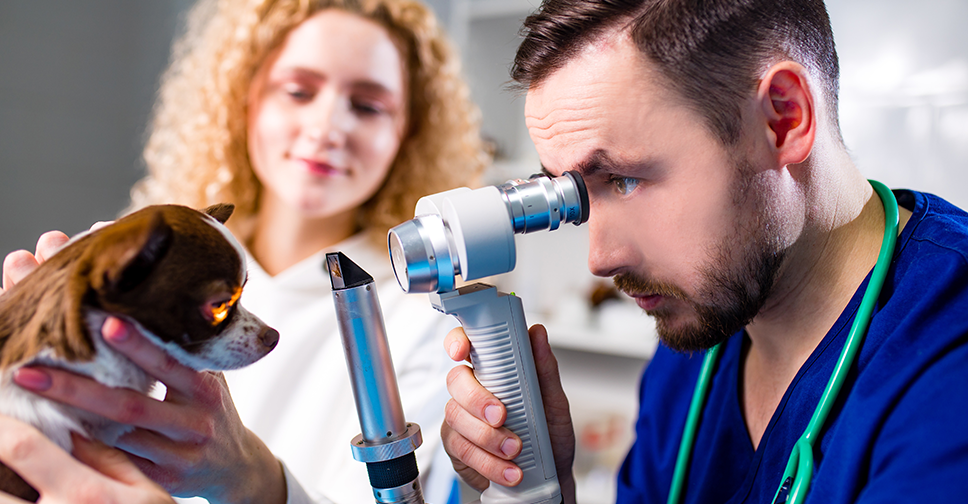
Cataracts and Cataract Surgery
Understanding cataracts
The lens is responsible for focusing light on the retina (called accommodation), although this function is poorly developed in most animals in comparison to people. When the lens tissue is damaged it changes from being transparent to become cloudy or opaque and we call this damaged or abnormal lens tissue a ‘cataract’. Cataracts may be very small and not affecting vision (incipient), immature (vision is affected), mature or hyper mature (no vision).
Cataracts commonly begin in only one part of the lens before affecting the adjacent tissue and increasing in size. They can have a range of appearances and the rate of progression can be very difficult to predict, although it tends to be more rapid in younger animals. Cataracts can develop in one or both eyes or at different rates in each eye.
What causes cataracts?
Many cataracts in dogs have a genetic or inherited basis, but they can also develop following trauma, penetrating injury (cat’s claws), as a drug reaction, following prolonged exposure to UV light, due to age, secondary to inflammation or associated with systemic diseases (particularly diabetes mellitus).
What do cataracts cause?
All cataracts release lens proteins (called crystallins) into the eye that produce inflammation (called lens induced or phacolytic uveitis). If this is untreated there is a high risk for the development of secondary glaucoma which is both blinding and painful.
What is the treatment?
There are several medical options for patients with cataracts that include the use of anti-oxidants (as tablets or eye drops) or enzyme inhibitors (for diabetics).
However, most of these options are only effective in the short term and eventually vision is lost unless surgery is performed.
What is cataract surgery?
A small incision (2.65mm) is made in the cornea near the edge of the eye. A special probe is inserted into the lens through this tiny hole and high frequency ultrasound is used to break the cataract into pieces which are then sucked out of the eye. This process is called phacoemulsification and has a success rate of approximately 90%.
What should you do if your pet has a cataract?
Early referral for a complete eye examination is recommended. Medical treatment (to control inflammation) may be started even if surgery is not being planned.
The health of the retina and other parts of the eye should be assessed, and retinal function determined by performing CPLR (chromatic pupillary light reflex) testing, ultrasound or possibly using an ERG (electroretinogram).
When is surgery recommended?
Early surgical removal of immature cataracts has a higher success rate than waiting until the cataract is mature. There is less of an inflammatory reaction, a lower risk of bleeding during the procedure, faster recovery of vision after surgery, and less risk of complications such as glaucoma and retinal detachment.
The decision of when to perform surgery should be discussed between you and your eye surgeon as the postoperative medication may be required up to 4 times daily and rechecks may be needed at least weekly (or more often) during the immediate period after surgery.
